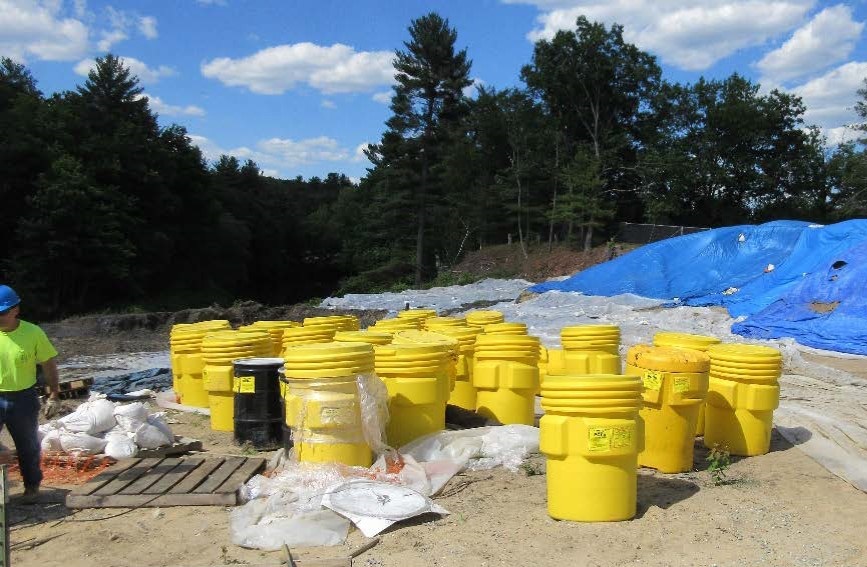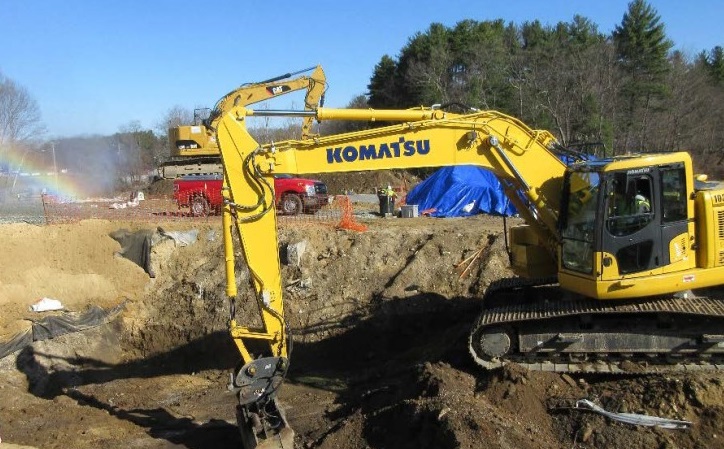Hazardous Waste Remediation
Overseeing the long-term remediation and management of contaminated sites in New Hampshire.
The State Sites program regulates all sites where a hazardous substance or waste has been released or has the potential to be released i.e. contaminated sites in accordance with Env-Or 600. The section oversees the long-term remediation and management of contaminated sites. Sites contaminated by petroleum products are managed under the Petroleum Remediation Program (many sites have both petroleum and hazardous waste contamination, and are then managed jointly by both programs).
For information specific to the investigation of per- and polyfluoroalkyl substances, please see our NH PFAS Investigation webpage.
Resources

Notification/Initial Response of contamination
In the event of contamination, the responsible party is required notify the NHDES Waste Management Division at (603) 271-3899 within 60 days of discovery of a violation of the Ambient Groundwater Quality Standards of Env-Or 603.01. Initial Response actions should be conducted to reduce risks to human health and the environment in accordance with Env-Or 605.04.
Learn more about Reporting Oil Spills, Hazardous Waste Spills and Groundwater Contamination
Remedial Action Plan Development/Implementation
The intent of the Remedial Action Plan is to provide recommendations to:
-
Remove or treat the source of contamination.
-
Contain the contamination source to limit the impact to groundwater, surface water and soil to the extent feasible.
-
Protect human health from exposure through the indoor air exposure and direct contact pathways.
-
Restore groundwater quality to AGQS and restore soil quality to the S-1 soil cleanup standards.
Remedial alternative should be evaluated based on effectiveness and reliability, feasibility and a risk/benefit comparison in accordance with Env-606.

Conducting a Site Investigation
A site investigation shall be conducted by the responsible party under the direction of a qualified environmental professional to determine the nature and extent of the contamination and include relevant information pursuant to Env-Or 606 -Comprehensive Response Actions. A conceptual site model should be developed to determine appropriate remedial alternatives as necessary, and evaluate the risk to human health and the environment. In addition to the 600 Rules, responsible parties should consult relevant NHDES documents pertaining to site investigations.
Institutional Controls: Groundwater Management Permits and AURs
Institutional controls are often an important part of the overall cleanup strategy for a site. Institutional controls are used when contamination is first discovered, when remedies are ongoing and when residual contamination remains onsite at a level that does not allow for unrestricted use and unlimited exposure after cleanup.
The two types of institutional controls primarily used in New Hampshire are a groundwater management permit (GMP) and an activity and use restriction (AUR).
- Groundwater Management Permits: When groundwater at a site does not meet AGQS, a GMP is required to minimize the potential for human consumption of the groundwater. This GMP must be approved by NHDES and then a notice of GMP is recorded in the chain of title for the property at the local registry of deeds. A list of documents for GMPs is found on the application page.
- Activity and Use Restrictions: In limited cases, if it is infeasible to remove contaminated soil at a site, AURs are used to manage site activities and uses to maintain protection of the public health and the environment. AURs typically contain requirements for inspection and maintenance of any protective structures, such as engineered caps or pavement. A list of documents for AURs is found on the application page.
Site Closure
A contaminated site is closed when NHDES determines that regulatory action is no longer necessary because all corrective action goals have been achieved.
Site closure goals:
- The source of contamination must be eliminated.
- On-Site Dissolved contamination levels in groundwater must be below AGQS, and contaminated soil direct contact risks must be eliminated.
- Off-Site Impact: Dissolved contamination levels within the Groundwater Management Zone (GMZ) must be below AGQS.
For more information about site closure, see the “Contaminated Site Closure: A Property Owner’s Guide” fact sheet.
Reporting/ Document Submittals and More Information
In an effort to improve public access and security of documents and reduce the use of paper, NHDES Waste Management Division strongly encourages the electronic submittal of documents to OneStop. Please review our Submittal Guidance for more information on document upload requirements. OneStop is also available to the public to review documents pertaining to Hazardous Waste Sites.




